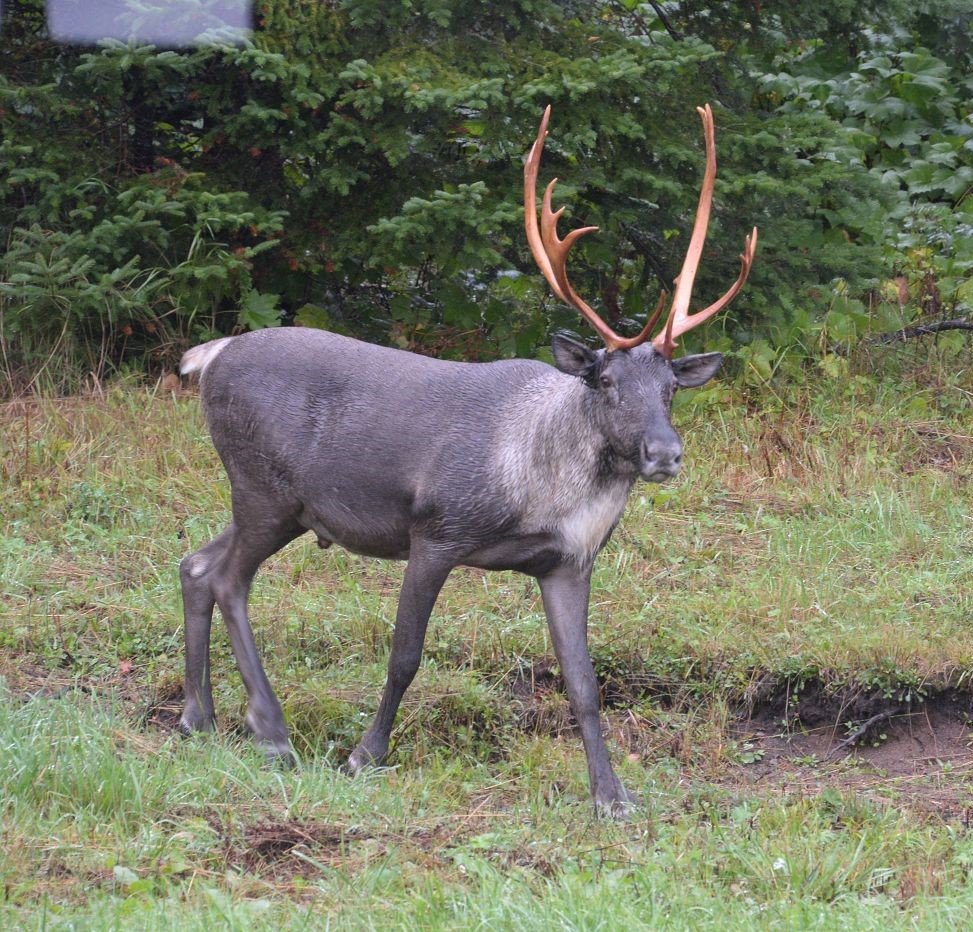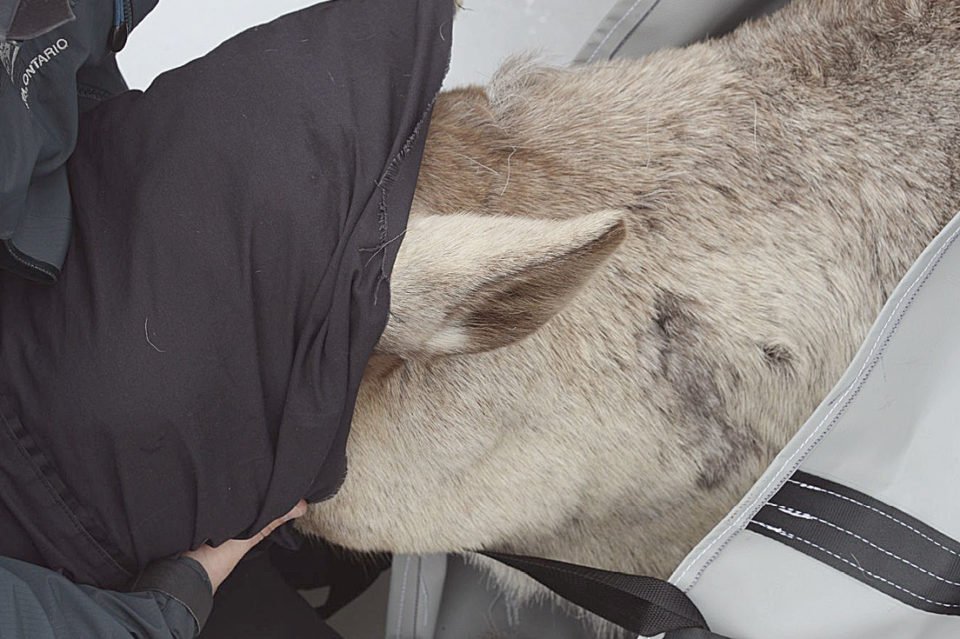Somewhere on the North Shore of Lake Superior between the Ontario communities of Terrace Bay and Marathon, there is a woodland caribou. Likely there is more than one, but no one knows for sure just how many there may be. What is known is that over the last two decades this caribou population, which has existed in these environs since the retreat of the last glacier, is dwindling away. They have already disappeared from a former stronghold, the wilderness peninsula of Pukaskwa National Park. Now some worry they may vanish entirely from Lake Superior’s shores.
One of those worriers is Gord Eason, a retired wildlife biologist who worked for the Ontario Ministry of Natural Resources. In 2018, he and a handful of other concerned citizens, along with the Michipicoten First Nation, convinced his former employer to perform a rescue mission to trap caribou from Lake Superior’s Michipicoten Island, where they were being wiped out by wolves that had crossed a rare ice bridge just four years earlier, and airlift them to predator-free islands. It is fair to say the provincial actions to save the caribou kicked into gear after the animals’ plight was reported in a New York Times story.
This winter, Eason and the other advocates have tried to draw attention to the remaining mainland caribou, to have the provincial government perform a winter aerial survey (the only way to find and count them) of the population. They believe these caribou should also be captured and moved to predator-free islands to save them and their unique genetics. So far, their efforts to motivate the government into action have been unsuccessful.
From my American perspective, the official lethargy to perpetuate what is clearly an endangered and iconic caribou population is difficult to comprehend. In contrast, U.S. wildlife biologists and the National Park Service undertook extensive studies and then acted to trap and transfer gray wolves to Isle Royale National Park when the resident animals fizzled out due to inbreeding. That project received a ton of media attention and broad public support.
I’ve been told one reason the provincial government largely ignores Lake Superior caribou is because it would be required to maintain a habitat corridor to connect them with resident caribou populations that exist about 100 miles further north. Caribou are creatures of old forests. Lands where logging occurs, which is nearly everywhere north of Lake Superior, become better habitat for moose and deer, which bring with them predatory wolves and a parasitic brainworm fatal to caribou and moose, but not whitetails. The one-two punch of abundant wolves and the parasite is too much for caribou to endure. And leaving a corridor of old trees is too much for the timber industry to endure.
Eason and other advocates argue that suitable, unlogged habitat to support a significant, isolated caribou population exists along the North Shore. Not only that, but caribou are part of the lake’s original biota. Since Canada has chosen to preserve Superior’s pristine shores with a national park, a national marine conservation area (one of the largest protected freshwater areas in the world) and expansive provincial parks, it stands to reason the native fauna should be protected, too.

There is precedent for doing so. Over the past 20 years, Ontario has done a remarkable job of restoring native coaster brook trout. Beginning in the 1950s, fisheries agencies in the U.S. and Canada embarked on an ambitious and still ongoing effort to control invasive sea lampreys, which nearly wiped out Superior’s native lake trout. Minnesota’s efforts to restore native lake sturgeon in the St. Louis River, begun with stockings in the 1980s, has resulted in a growing, naturally reproducing population. Along Minnesota’s shores, public land managers and property owners are planting white pine to ensure the continued survival of this towering native conifer. It can even be noted that when the U.S. placed gray wolves on the Endangered Species List, their last remaining stronghold in the Lower 48 was Minnesota’s North Shore.
We’re lucky to be in a place that, even after 400 years of European expansion and development, has remained stubbornly wild and resilient in spite of human alterations to nearly every aspect of Lake Superior’s aquatic and terrestrial habitat. But we need to appreciate that Superior’s inherent wildness is not something we can take for granted. We are the beneficiaries of more than a century’s worth of concerted conservation efforts to protect pristine landscapes, keep the water clean and perpetuate native flora and fauna. Those conservationists—and there have been thousands of them over time—have recognized Lake Superior and the surrounding environs as an outstanding natural resource. They were willing to invest their time, their political capital and their money to make sure it stayed that way. When necessary, they were willing to confront the forces of development in courtrooms or the political arena to defeat the works of man that would destroy the works of Nature.
While over many decades we’ve benefited from the conservation efforts of many, at any given time, there have never been more than a dedicated few. Most folks are busy going about their own lives and are often unaware of the intricacies of the natural world or how human endeavors can threaten its existence. Relatively rare are the individuals who have the knowledge, passion and courage to make conservation happen.
I worry that the interest in conservation is at a low ebb, which is why there is less outcry than there ought to be over the fate and future of Lake Superior’s caribou. Perhaps our urbanized society has become so detached from nature that too many fail to see the North Shore as anything more than a scenic backdrop for an “outdoor lifestyle.” If that is true, we do so not only at the peril of the caribou, but of ourselves. If we chip away at the natural wonders that make Lake Superior such a special place, it may not be long before it is no more special than anywhere else.




